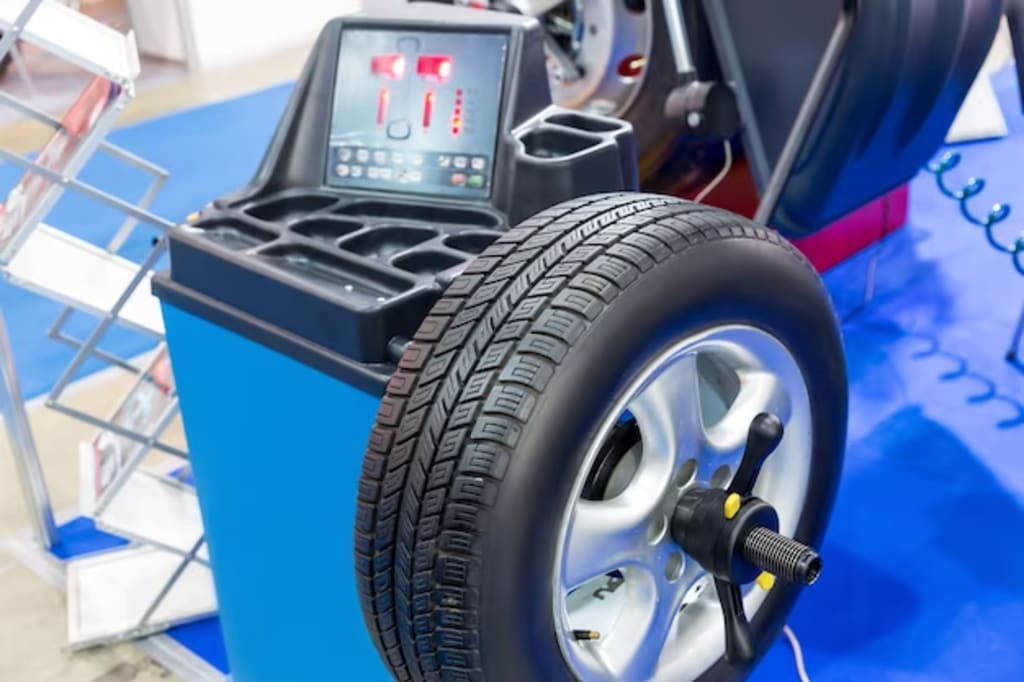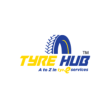
When it comes to maintaining your vehicle's safety and performance, two crucial factors often come into play: tire balance and tire alignment. These two terms might sound similar, but they address distinct aspects of your vehicle's handling and overall health. In this blog, we will dive deep into the world of tire balance and alignment, exploring what they are, how they differ, and when you might need each service. Whether you're a seasoned car enthusiast or a casual driver, understanding the importance of these services can help you make informed decisions about your vehicle's maintenance.
The Basics: What is Tire Balance?
Tire balance refers to the even distribution of weight around your vehicle's tires and wheels. When your tires are balanced correctly, they rotate smoothly without causing unnecessary vibrations. This balance is crucial for several reasons:
1. Smooth Ride:
A well-balanced tire ensures a smoother and more comfortable ride. It prevents the sensation of vibrations that can be felt through the steering wheel or the vehicle's body, especially at higher speeds. These vibrations can make driving unpleasant and, in some cases, even lead to driver fatigue.
2. Extended Tire Life:
Balanced tires experience less wear and tear. When a tire is imbalanced, certain areas of the tire will bear more weight, causing uneven wear. This can reduce the lifespan of your tires and necessitate premature replacements, which can be costly.
3. Improved Fuel Efficiency:
An imbalanced tire can also affect your vehicle's fuel efficiency. When a tire is out of balance, it creates additional rolling resistance, which means your engine has to work harder to maintain speed. This can result in increased fuel consumption and higher costs at the pump.
4. Enhanced Handling and Safety:
Properly balanced tires improve your vehicle's handling and stability, particularly when navigating corners or driving on uneven roads. This enhances overall safety by reducing the risk of accidents or loss of control.
The Basics: What is Tire Alignment?
Tire alignment, on the other hand, deals with the positioning of your vehicle's wheels in relation to each other and the road. Proper alignment ensures that all four wheels are pointing in the correct direction and are parallel to each other. There are three main types of tire alignment:
1. Camber Alignment:
Camber alignment addresses the vertical tilt of the wheels. When viewed from the front of the vehicle, if the top of the tire tilts outward, it's referred to as positive camber. Conversely, if the top of the tire tilts inward, it's negative camber. Proper camber alignment ensures that the tire's contact patch with the road is even, promoting even tire wear and optimal handling.
2. Toe Alignment:
Toe alignment focuses on the angle at which the tires point inwards or outwards when viewed from above. If the front edges of the tires point towards each other, it's called toe-in. If they point away from each other, it's toe-out. Correct toe alignment ensures that the tires are parallel and not dragging against each other, leading to even wear and better handling.
3. Caster Alignment:
Caster alignment relates to the forward or backward tilt of the steering axis. Proper caster alignment helps stabilize your vehicle's steering and ensures that the wheels return to the center position after making a turn.
Key Differences between Tire Balance and Alignment:
Now that we understand the basics of tire balance and alignment, let's highlight the key differences between these two critical aspects of vehicle maintenance:
1. Purpose:
Tire Balance: It ensures that the weight is evenly distributed around each tire and wheel assembly, reducing vibrations and promoting a smoother ride.
Tire Alignment: It involves adjusting the angles of the wheels to ensure they are parallel to each other and the road, promoting even tire wear, proper handling, and stability.
2. Symptoms:
Tire Balance: Symptoms of an imbalanced tire include vibrations felt through the steering wheel or vehicle body, especially at higher speeds.
Tire Alignment: Symptoms of poor alignment may include uneven tire wear, the vehicle pulling to one side, or a crooked steering wheel when driving straight.
3. Frequency:
Tire Balance: It may need to be checked and corrected more frequently, as imbalances can occur due to normal wear and tear, changes in tire condition, or the addition of new tires.
Tire Alignment: Alignment typically requires less frequent attention and is generally adjusted during specific maintenance intervals or when symptoms of misalignment become apparent.
4. Impact on Tire Life:
Tire Balance: Incorrect balance can lead to uneven tire wear, reducing the lifespan of your tires.
Tire Alignment: Proper alignment helps ensure even tire wear, potentially extending the life of your tires.
5. Impact on Fuel Efficiency:
Tire Balance: Imbalance can increase rolling resistance, potentially impacting fuel efficiency.
Tire Alignment: Correct alignment helps maintain optimal fuel efficiency by reducing unnecessary tire drag.
When Do You Need Tire Balance?
Tire balance is typically required in the following situations:
1. When You Get New Tires:
Whenever you install new tires, it's essential to have them balanced. Even brand-new tires can have slight weight discrepancies that need to be corrected for a smooth ride and even wear.
2. After Tire Rotation:
During a tire rotation, the tires are moved to different positions on the vehicle. This can disturb the existing balance, and rebalancing them ensures even wear and a smooth ride.
3. When You Feel Vibrations:
If you experience vibrations in the steering wheel or vehicle body, especially at higher speeds, it's a clear sign that your tires may be out of balance. In such cases, it's crucial to have them balanced promptly.
4. As Part of Regular Maintenance:
Many vehicle manufacturers recommend regular tire balancing as part of routine maintenance. Check your vehicle's owner's manual for specific recommendations.
When Do You Need Tire Alignment?
Tire alignment is necessary in the following situations:
1. When You Get New Tires:
Similar to tire balance, when you install new tires, it's advisable to have a tire alignment performed. Proper alignment ensures that your new tires wear evenly and provide optimal handling.
2. After Hitting Potholes or Curb Impacts:
Hitting a significant pothole or curb can knock your wheels out of alignment. If you notice changes in your vehicle's handling or steering after such an incident, it's wise to have the alignment checked.
3. Uneven Tire Wear:
If you notice that your tires are wearing unevenly, it's a clear indication that your vehicle may be suffering from alignment issues. Uneven tire wear can lead to reduced tire life and compromised safety.
4. After Suspension or Steering Repairs:
Any repairs or modifications to your vehicle's suspension or steering components can affect the alignment. It's essential to have the alignment checked and adjusted if needed after such work is done.
5. As Part of Routine Maintenance:
Some vehicle manufacturers recommend periodic alignment checks as part of regular maintenance. Following your manufacturer's recommendations can help maintain your vehicle's performance and safety.
Conclusion
In the debate of tire balance vs. alignment, it's clear that both play crucial roles in maintaining your vehicle's safety, performance, and longevity. While tire balance focuses on eliminating vibrations and promoting a smooth ride, tire alignment ensures that your vehicle's wheels are correctly positioned, promoting even tire wear and proper handling.
To determine whether you need tire balance, alignment, or both, it's essential to pay attention to the symptoms your vehicle exhibits and follow the recommended maintenance intervals in your owner's manual. Neglecting these critical maintenance tasks can result in reduced tire life, compromised safety, and increased operating costs.
In the end, a well-balanced and properly aligned set of tires will not only keep you safe on the road but also enhance your driving experience. So, whether you're hitting the highway for a road trip or navigating your daily commute, remember that the right balance and alignment are the keys to a smoother, safer ride. For all your tire balance and alignment needs, trust TyreHub to keep you rolling in the right direction.
About the Creator
Tyre Hub
TyreHub is the one stop solution to buy Car Tyres, Bike and Activa tyres online with the best price offers in Ahmedabad and get them delivered at your doorstep. For more information visit https://www.tyrehub.com/ or call us 8141335551






Comments
There are no comments for this story
Be the first to respond and start the conversation.